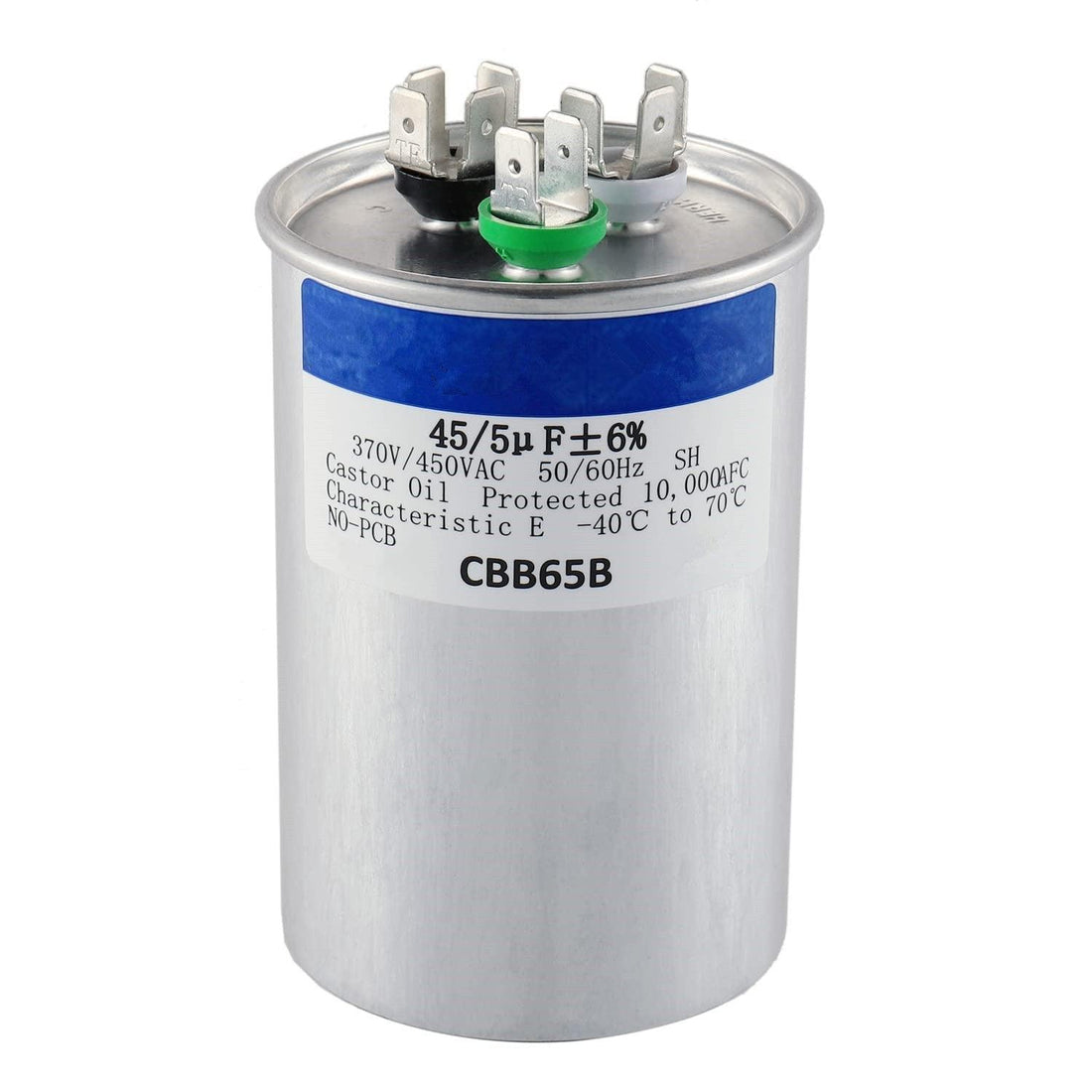
Diagnosing and Replacing a Faulty Air Conditioner AC Not Blowing Cold Air,AC Making Strange Noises,AC Not Turning On
Share
Diagnosing and Replacing a Faulty Air Conditioner Capacitor: A Guide to Restoring Cool Comfort
AC Not Blowing Cold Air
AC Making Strange Noises
AC Not Turning On
Thermostat Problems
AC Running Constantly
In the sweltering heat of summer, an air conditioner that ceases to cool effectively can transform from a minor inconvenience to a significant discomfort. Among the myriad of reasons behind an air conditioner's diminished cooling capacity, a faulty air conditioner capacitor, particularly affecting the compressor's operation, stands out as a common culprit. This blog post delves into the systematic approach to diagnosing a malfunctioning air conditioner capacitor and highlights the importance of choosing an appropriate replacement, drawing insights from relevant academic studies and technical research.
The Capacitor's Crucial Role in Air Conditioning Systems
The air conditioner capacitor is an essential component, serving as the initial spark for the compressor and fan motors. It stores and releases electrical energy, aiding in the start-up and continuous running of these components. Research highlighted in technical papers, such as those published in the Journal of Electrical Engineering, elucidates the capacitor's role in optimizing the efficiency and longevity of air conditioning units. A malfunctioning capacitor, therefore, directly impacts the system's ability to cool effectively.
Identifying a Faulty Air Conditioner Capacitor: A Step-by-Step Guide
1. Prioritizing Safety: Ensuring the air conditioner unit is disconnected from its power source is paramount before any diagnostic steps are taken.
2. Conducting a Visual Inspection: A preliminary visual check can reveal obvious signs of capacitor failure, such as bulging, leakage, or rust. However, not all defects are visible, necessitating further examination.
3. Listening for Humming Sounds: A humming noise from the compressor upon activation, without the motor starting, often indicates a capacitor struggling to release the necessary energy.
4. Utilizing a Multimeter: A definitive diagnosis involves using a multimeter to measure the capacitor's capacitance level, comparing it against the manufacturer's specified ratings. A study in the International Journal of Advanced Electrical and Electronics Engineering (IJAEEE) underscores the accuracy of this method in pinpointing capacitor health.
When the CBB65 capacitor, commonly used in air conditioning compressors, fails, it can lead to several noticeable symptoms. These symptoms include:
-
Difficulty Starting or Unable to Start: One of the most common signs of failure is when the air conditioning compressor struggles to start or cannot start at all. This happens because the capacitor cannot provide the necessary initial current to kickstart the compressor.
-
Poor Cooling Performance: If the capacitor is partially damaged, it may cause the compressor to operate inefficiently, thereby affecting the cooling capacity of the air conditioner.
-
Humming Noise During Operation: A damaged capacitor might cause the air conditioner to produce an unusual humming noise or other odd sounds while running.
-
Visible Damage to the Capacitor: Signs of physical damage to the capacitor, such as swelling, leakage, scorching, or bursting, are direct evidence of internal failure.
-
Overheating of the Air Conditioner Circuit: A faulty capacitor can lead to overheating of the air conditioner's electrical circuit, which not only affects the efficiency but can also pose safety risks.
-
Unusually High Electricity Bills: Due to the reduced efficiency of the compressor caused by the capacitor failure, the air conditioner may consume more electricity than usual, leading to an unexpected increase in electricity bills.
Selecting the Right Replacement Capacitor
Upon confirming a malfunctioning capacitor, selecting a suitable replacement is critical. The replacement must match the original capacitor's capacitance and voltage ratings to ensure compatibility and prevent potential damage to the air conditioner unit. The 45+5 MFD 370V/440VAC CBB65 Dual Run Circular Start Capacitor emerges as a robust option, designed to enhance the efficiency and reliability of air conditioning systems. It's imperative to verify the compatibility of the replacement capacitor with your unit's specifications before proceeding with a purchase.
Concluding Thoughts
The malfunctioning of an air conditioner capacitor can significantly hamper the unit's cooling efficiency, highlighting the importance of timely diagnosis and replacement. The steps outlined above, supported by insights from academic literature, provide a structured approach to identifying and addressing capacitor-related issues. Opting for a high-quality replacement capacitor, such as the 45+5 MFD 370V/440VAC CBB65 Dual Run Circular Start Capacitor, ensures the restoration of your air conditioner's cooling capacity, thereby reinstating comfort during the heat.
This guide not only offers practical steps for diagnosing and solving a common air conditioning issue but also underscores the importance of informed decision-making in selecting replacement parts, drawing on the wealth of knowledge contained within relevant engineering and technical research.